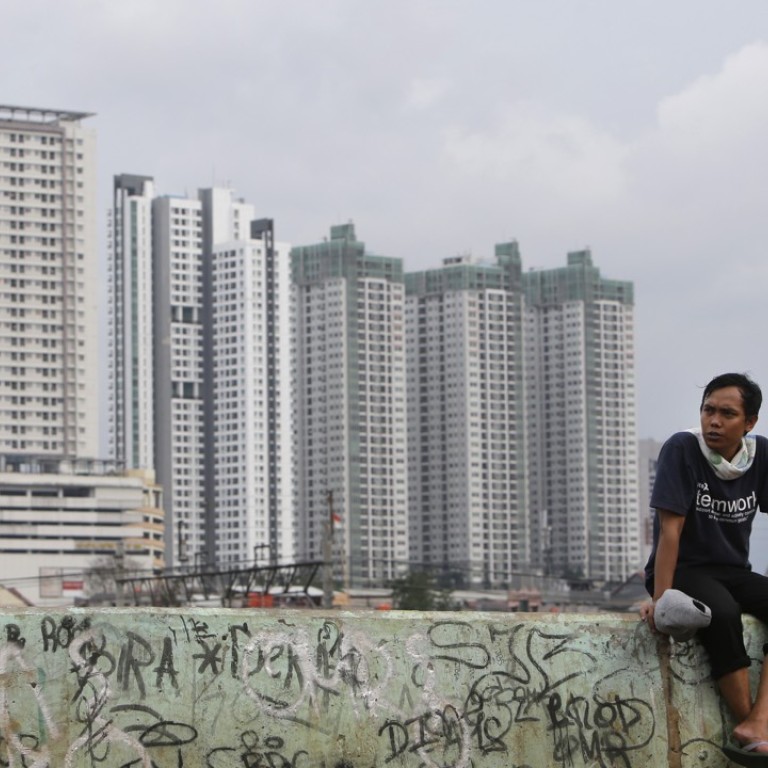
New | Mega cities will be hot spots for real estate investment in new growth era
Exciting real estate opportunities are in store as emerging nations transition to consumer-focused economies
Global megatrends are reshaping the world economic order. Rapid economic growth in emerging countries is leading to mass urbanisation in cities across Asia, Africa and South America. As these cities transition from production to consumer industries, and increase their financial and business services, exciting opportunities will emerge for global real estate investors.
We often hear about the shift in economic power from West to East, or more specifically China’s ambition to displace the US as the world’s biggest economy. China’s rapid growth in recent decades has underpinned the development of much of emerging Asia. According to Oxford Economics, large emerging markets of the East, that is China and India, have gained ground, particularly since 2008 when the US and China experienced contrasting fortunes after the global financial crisis.
Between 2015 and 2030, Oxford Economics forecasts Asian cities will benefit from a 90% rise in GDP per head, compared to 35% in North American and European cities. However, the US is expected to maintain a comfortable lead in GDP levels over China well beyond 2030.
The population in Jakarta is expected to reach 50 million, around five times greater than the size of Greater London today
Rapid economic growth is focused on emerging cities, particularly in Asia and Africa, where urbanisation trends are leading to the enormous expansion of existing conurbations, alongside growth in new cities. For example, the population in Jakarta is expected to reach 50 million, around five times greater than the size of Greater London today. The rates at which individual cities mature economically will vary and some emerging cities will outgrow their developed counterparts. By 2030, Shanghai’s GDP will almost catch up with the size of that of Paris, currently the world’s fourth-largest metro area by economic size. Despite experiencing healthy GDP growth itself, London will also look nervously over its shoulder as the likes of Shanghai and Beijing approach
Rapid urbanisation will be accompanied by major new job creation and rising prosperity, particularly for those cities that are able to make the transition to higher economic value services. Oxford Economics predicts that about 3 million jobs will be created in Beijing over the next 15 years, almost five times more than in London. In a list of the top 25 markets for office job creation, London and Istanbul are the only two developed markets that make the list. Despite this, it does not mean developed office centres are going to vanish from the list of the top office locations. Many have enormous scale and enjoy major competitive advantages.
At present, the desire of institutional investors to access real estate opportunities in emerging world centres is curbed by the lack of transparency and other significant barriers to entry in those markets. There are three factors which are relevant when shortlisting emerging target office markets for potential future investment, including scale, growth potential and transparency. Applying these criteria results in a shortlist of 20 potential targets, with the majority of qualifying office centres located in emerging Asia and Latin America.
Based on the JLL Transparency Index, the top five cities that are classed as transparent and possessing scale are Kuala Lumpur in Asia, Cape Town and Johannesburg in Africa, and Sao Paolo and Rio de Janeiro in Latin America. Of these, the two Brazilian Tier 1 cities have the lowest growth potential and biggest scale.
China performs relatively well in terms of investment performance measurement and market fundamentals due to the steady progress being made on the regulatory and legal fronts. However, transparency of the transaction process remains poor and progress on structural reforms and regulatory enforcement is limited to the Tier 1 cities.
Other qualifying office markets that rate as semi-transparent include Bangkok, Manila, Jakarta, India’s Tier 1 metros and Mexico City and Monterrey in Mexico. India scores poorly in terms of the transparency of its transaction process and also suffers from high investment transaction costs and low professional standards among local agents.
While future growth prospects might appear enticing, a reality check is required. Emerging cities are fraught with unpalatable risks for institutional investors. A realistic assessment of future market transparency is required. Extensive and ongoing country and real estate market due diligence is essential for all suggested long-run target markets. In the meantime, core investors will focus on traditional office centres in the developed world cities of North America, Europe and Oceania, especially those centres with high liquidity and where risk-adjusted returns are both easier to quantify and are better understood.
Andy Schofield, Director of Research, TH Real Estate

